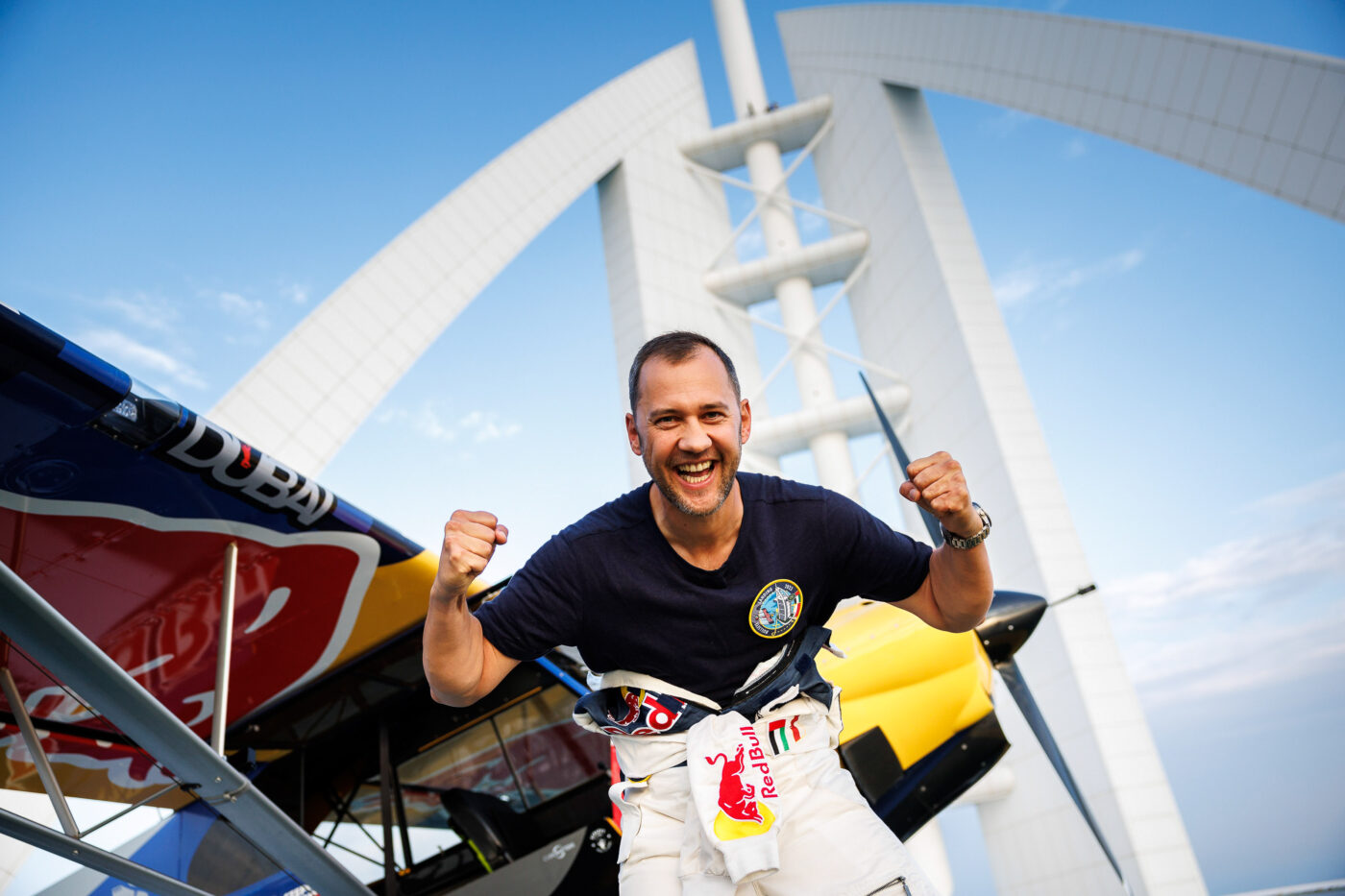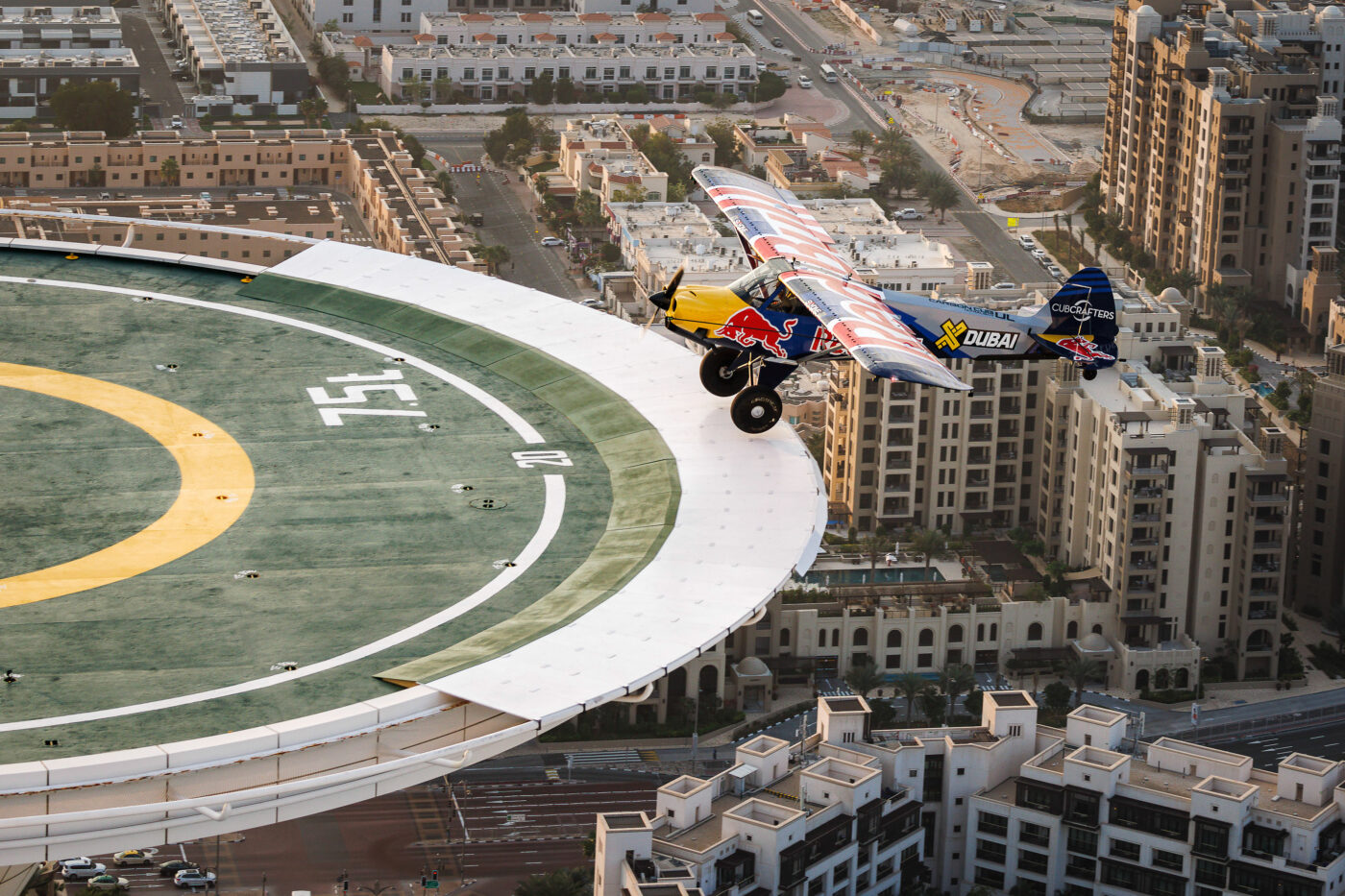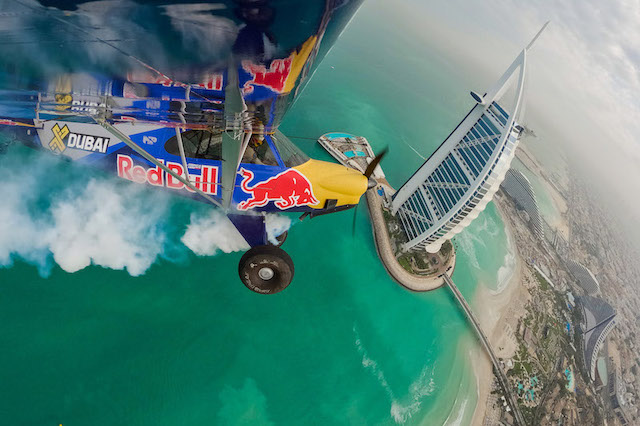POLAND’S LUKE CZEPIELA STOPS A FIXED-WING AIRCRAFT 212 METERS ABOVE THE GROUND ON HELIPAD OF DUBAI’S WORLD-FAMOUS HOTEL
At 39-years-old Luke Czepiela has spent his life pushing his limits in aviation, and at 6:58am on March 14 he became the first person in history to land a plane on the helipad atop the iconic Burj Al Arab Jumeirah in Dubai, United Arab Emirates.
Czepiela, an air racing champion, had just 27 meters to bring his Cub Crafters-built STOL aircraft (Carbon Cub / short take-off and landing) to a stop and completed the task in 20.76 meters. While the aircraft is specifically made for abrupt landings in ordinary circumstances, landing atop a 56-storey building ensured Czepiela’s historic landing took place in extraordinary circumstances.
Adding to the spectacle was Czepiela’s take off, where he soared over the beach in celebration.
“To be honest I couldn’t feel happier! Two years in the making, third attempt (to land) today and everything was perfect. We’ve managed to put a plane on a helipad 212 meters above the ground, on the most iconic, the most beautiful building in the world,” said Czepiela.
“The best bit after the landing was the take off, I had so much fun just dropping the aircraft out of the sky and diving almost to beach level.”
Czepiela has been prepping for this moment since 2021. In total he completed 650 test landings at ground level – in Poland, the US, and Dubai – building his confidence to land on the elevated helipad.
“The biggest challenge was the lack of any external points of reference, which is usually found at an airport where you have hundreds of meters of runway,” he continued.
“Normally when approaching a runway, I see how high above it I am, and I can easily control the approach path. Today the helipad disappeared over the nose and my periphery was reduced. I had to rely on my practice and instincts if I wanted to come to a stop before running out of space.”
Czepiela’s landing isn’t the first time the sail-shaped hotel has been the scene of an impressive feat. Among those moments a tennis match between champions Roger Federer and Andre Agassi in 2005, and in 2013, David Coulthard performed donuts in a Formula 1 car.
Coulthard, a 13-time F1 Grand Prix winner said of Czepiela’s achievement “I want to send my congratulations to Luke for joining me as the only two people to do donuts on the Burj Al Arab helipad. What an incredible sight seeing him land an aircraft on the pad!”
With his flight adding another chapter to the storied helipad, Czepiela recalled the moment when the perfect weather conditions arrived for him to attempt his world-first landing.
“Once I got to the aircraft and I started practicing with the little wind, I felt so confident, I felt so good,” Czepiela said.
“I just played some music in my helmet and Mike (aviation expert Mike Patey) said the magic words ‘wind is steady at seven (knots)’, and I said ‘ok let’s drop this baby down on the pad’. When I stopped, I couldn’t stop myself. I was running, I was shouting, and everyone was hugging each other.”
“We landed a plane on the helipad on top of the Burj Al Arab. I have too many emotions to give you technical details. We landed a plane on a helipad!”
Guiding Czepiela onto the helipad was renowned American aviation engineer, fabricator and aircraft builder Mike Patey, who modified Czepiela’s plane with the team from aircraft manufacturer CubCrafters.
Patey and CubCrafters made a number of modifications, reducing aircraft weight to 425 kilograms, moving the main fuel tank to the rear of the plane to allow for more aggressive braking and adding nitrous to enhance power for Czepiela’s secondary challenge – taking off from the helipad.
“In the lead up, our biggest challenge was reducing the weight,” recalled Patey. “Any mass in motion wants to keep rolling and if we couldn’t stop it, Luke would have bailed off the other side of the building.”
“But a lighter plane also means wind throws it around more, and you have less control. In this environment – with a tall building sticking up next to the helipad – weird wind currents go over the top and around the side of it. So we wanted some nice headwind to help the landing, but not too much. This was a truly unique challenge. It’s a love-hate thing.”
The second challenge of taking off in a space the size of a tennis court meant that Czepiela needed a low weight, high power output solution.
“We added nitrous tanks to get a lot of power without a lot of weight. This fuel speeds up combustion in the engine, pushing its cylinders to accelerate more quickly,” Patey continued.
“The Carbon Cub is the right aircraft for this project, but we needed the right person to fly it. And there are only a couple on this planet I would feel comfortable making this attempt. Luke is exactly that guy.”
Czepiela wanted to be a pilot since he was a child, and now has a piece of history to sit alongside previous exploits, including landing on Poland’s Sopot Pier, the longest wooden pier in Europe.
“From the first arrival here at the Burj Al Arab almost two-years ago we set out a plan how to do it, and now we’ve completed the plan, and everyone played their role exactly as scheduled,” Czepiela concluded.
“I feel awesome, there is no other word to describe it!”
Images free of charge for editorial use. Credit: Joerg Mitter, Samo Vidic, Naim Chidiac, Mihai Stetcu for Red Bull Content Pool.
For more information, images and videos visit: www.redbullcontentpool.com



